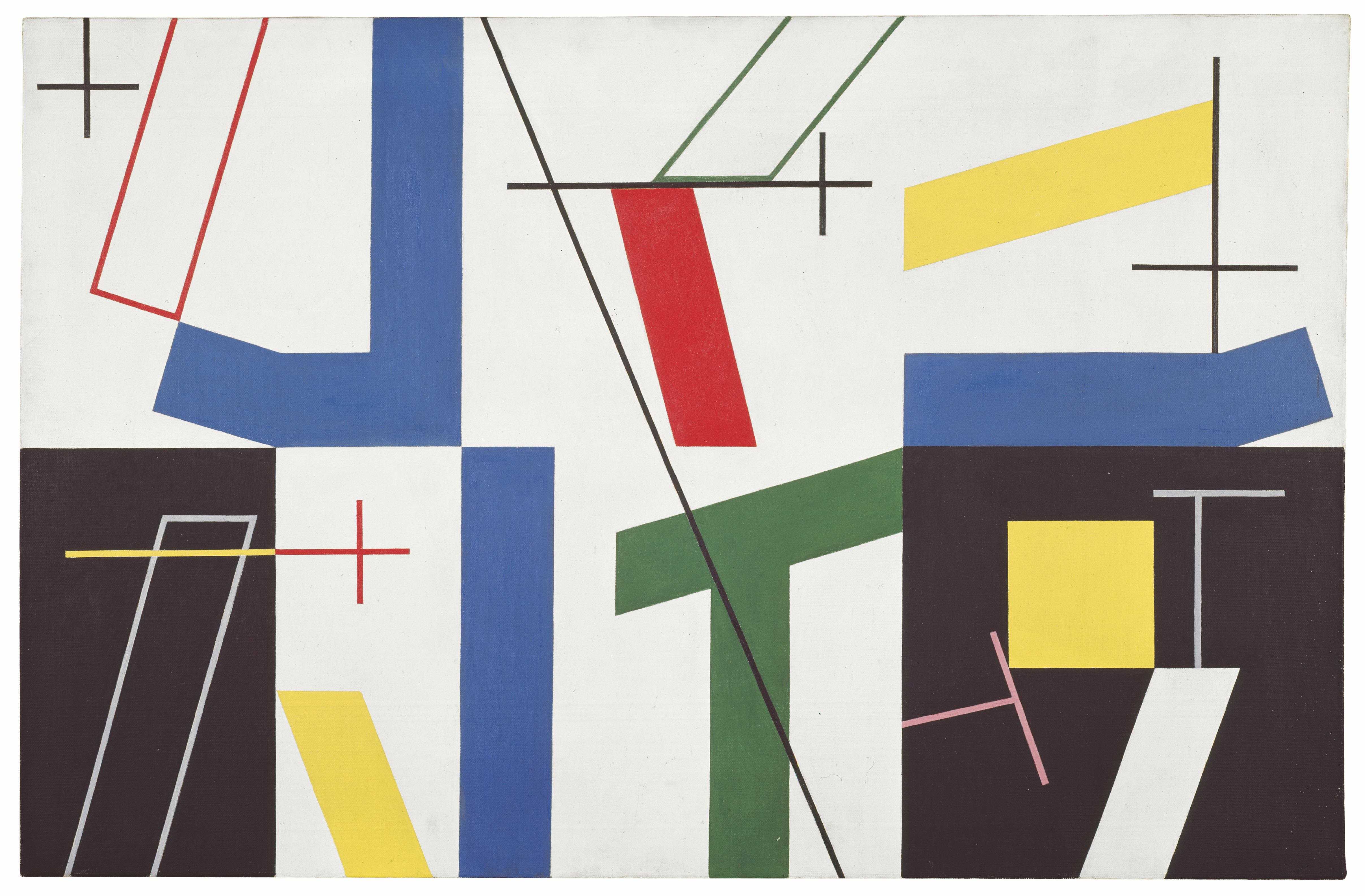Sophie Taeuber-Arp's huge range of work is celebrated in this Tate Modern exhibition, highlighting her innate skills with colour and medium. The exhibition is the first retrospective of Taeuber-Arp's work in the UK and demonstrates her long-lasting impact and influence on both art and design.
Sophie Taeuber-Arp is on at the Tate Modern from 15 July – 17 October 2021
Sophie Taeuber-Arp (1889-1943) was a Swiss artist and designer, an important figure within abstract art and a key member of the Dadaist movement. This exhibition at the Tate Modern contains over 200 examples of Taeuber-Arp’s wide-ranging career up until her accidental death in 1943, aged 53.
Taeuber studied Textile design going on to study fine and applied arts in Munich, before returning to Switzerland at the start of World War 1. Around this time, she attended dance school, met her husband artist Jean (Hans) Arp, as well as became a teacher of embroidery and design in Zurich.
Taeuber-Arp’s earlier work combined her knowledge of textiles with geometric shapes, rejecting the human form altogether, whilst embracing bright colours; the exhibition includes embroideries as well as decorative work including beaded bags, jewellery, rugs, pillowcases and tapestries, highlighting Taeuber-Arp’s interdisciplinary talent as a designer.
During her time in Zurich Taeuber-Arp and her husband became active members of the Dadaist movement there, co-signing the Zurich Dada Manifesto. The Dada movement celebrated the ridiculous and the absurd within art and the group held evenings at the Cabaret Voltaire, performing dances, reciting nonsense poetry, and other performance art. Taeuber-Arp created marionettes for an interpretation of the play ‘King Stag’ which will be on display in the exhibition.
In the 1920s Taeuber-Arp moved to France and continued to experiment with design; she was commissioned as an interior designer for the Café de L’Aubette and worked with De Stijl artist Theo Van Doesburg. She was a successful interior designer, employing primary colours, abstract and often geometric forms in a style similar to De Stijl. After World War Two broke out, Taeuber-Arp left Paris and continued to work, moving her focus onto paper (an easily transportable material) and the circle.
Taeuber-Arp tragically died in 1943 by carbon monoxide poisoning from an incorrectly fitting oven. This exhibition demonstrates her influence across 20th-century art and her talent as an interdisciplinary designer.
- Monday:
-
10:00 - 18:00
- Tuesday:
-
10:00 - 18:00
- Wednesday:
-
10:00 - 18:00
- Thursday:
-
10:00 - 18:00
- Friday:
-
10:00 - 18:00
- Saturday:
-
10:00 - 18:00
- Sunday:
-
10:00 - 18:00
Opening Hours
Fed up with misleading or - even worse - fake reviews? Or trying to collate reviews yourself from the best sources? You can now rely on Divento’s Review of Reviews which aggregates content from hundreds of trusty sources from around the world to deliver reliable overall reviews.
 72 %
72 %
"But her engagement with abstraction is no less profound for it, as this beautifully paced and presented show reveals."
"Even Taeuber Arp’s most geometric paintings are on the verge of a kind of figuration one might say that her painted shapes and lines we are an equivalent to her earlier marionettes , and have a dance like fluidity."
"SPONSORED It’s important to present Taeuber Arp in full because she brought fluidity and vitality to diverse artistic realms, and ideas in each discipline would pollinate the next."
"Her lines cross and re cross, stop short, loop away, get complicated, tail off and begin again, like thoughts in motion, poems without words."


